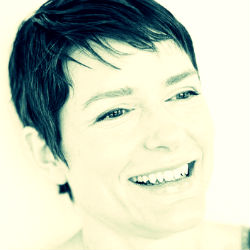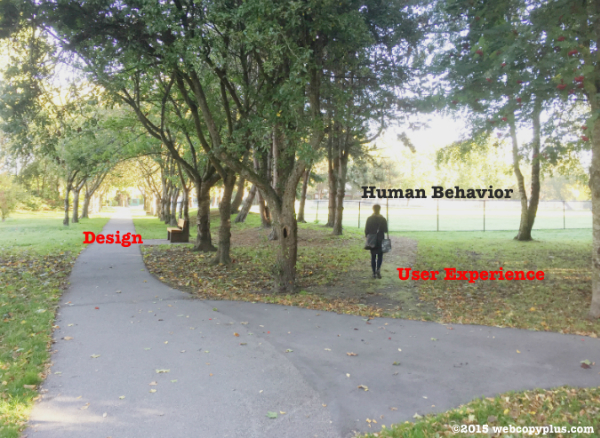User experience (UX), simply put, is the relationship between people and technology. Whether you’re a designer, developer, copywriter, entrepreneur, or other creative type, you’ve got a hand in identifying and designing that relationship. You have the power to create a product, service or website that people are drawn to, find easy to use and understand quickly. And with that power comes responsibility.
UX Basics
User experience is about designing products and services that are easy to use. In other words, designing positive experiences for users = user experience.
“User Experience is not computer programming, and it’s not graphic UI design,” explained Krispian Emert, User Experience Researcher at Microsoft. “It bridges the two.” She suggests you think of an Oreo cookie: “UX is the good stuff in the middle.”
You’ve probably become aware of user experience in a bad way if you’ve ever become frustrated online. Think of the time you painstakingly filled out a long form, only to accidentally hit a ‘clear’ button when you meant to select ‘submit’. The discipline of UX would question the benefits of having a ‘clear’ button in the first place.
“The funny thing is that people blame themselves for bad UX,” said Emert. “For instance, ‘My thumbs are too big’. Well, I’m here to tell you, your thumbs aren’t too big, it’s the design that’s too small.”
Conversely, if you can accomplish what you set out to do online, like effortlessly transferring funds with your mobile banking app, that’s good UX. Good UX ensures you can easily accomplish tasks. In fact, Emert stated: “Great UX is invisible.”
If you’re able to easily accomplish tasks, you can feel good about yourself, get stuff done, and do more important and meaningful things. On a grander scale, as do good design author David Berman suggests, good UX can make the world a better place.
What Does It Take To Create Great Experiences?
The process starts by researching the people who will use the product or service, and testing and refining your designs on actual people. It takes a deep, thorough understanding of people’s needs and their behaviour. “Without this empathetic understanding,” said Emert, “you may be a designer, but you’re not a user experience designer.”
Many people also confuse the design of the User Interface (UI) with UX, noted Emert: “The UI may be the tangible manifestation of the UX ‘iceberg’, but there are actually many steps that must be undertaken before we think about the color of the buttons or snazzy animations.”
An analogy would be creating a building. Before choosing the drape colours, carpet patterns, or cupboard handles, we must first decide if we’re building a cathedral, a shopping mall or a skyscraper (requirements gathering). Once the purpose has been determined, we need to ensure it meets user needs by understanding our users (you don’t want to build a tall skyscraper if the majority of its users have a fear of heights). The next logical step is to ensure we have the right content and images (e.g., the skyscraper is built with the appropriate materials), and that the structure and navigation allows people to accomplish tasks (e.g., users of the building can get from floor to floor and room to room easily). Then and only then should you turn your attention to the User Interface and make it aesthetically appealing or “pretty” (e.g., selecting carpets and drapes).
“User Experience is made up of many different disciplines, tools and activities,” stressed Emert. “This is why UX is fascinating to me — designing great experiences means I get to wear many hats.”
The Many Hats in UX
1) Anthropologist’s bush hat observing users. Read about the best way to capture your research.
2) Artist’s beret designing interfaces. Look back, and forward, on web design.
3) Actor’s sequined fez presenting findings to stakeholders. Learn about harnessing good ideas.
4) Geek’s pocket protector hat. How to work with technical constraints.
5) Detective’s hat. Gathering user behaviour clues from disparate sources.
6) Writer’s fedora. Designing microcopy for button labels and navigation schemes.
Emert added that on any given day, she also wears the hats of a comic book artist, industrial designer, librarian, ergonomist, architect, psychologist, business consultant, inventor, storyteller and more.
Despite your background and what collection of hats you wear, she encourages creative types and entrepreneurs to incorporate UX into their lives and work to make the world a more usable, better place.
“We really can change the world,” said Emert. “In small ways, by removing frustrating obstacles on a website, or in big ways, by designing highly impactful creations, like flatpack refugee shelters. Design makes a difference.”

Vancouver, Canada-based Krispian Emert is an expert in strategic solutions surrounding e-commerce, transactional systems, enterprise-scaled and global experiences across multiple touch points. Follow her @Krispian or connect via LinkedIn.
Build better relationships with your website. Say goodbye to dummy text and hello to smart content.








Designers need to get proactive and understand usability is the future of this area. Pretty images don’t cut it anymore. Design is more science than art.
Great article and my first real insight into UX. Thanks for the introduction to UX. Will definitely be consider this article when designing client websites.
Cheers